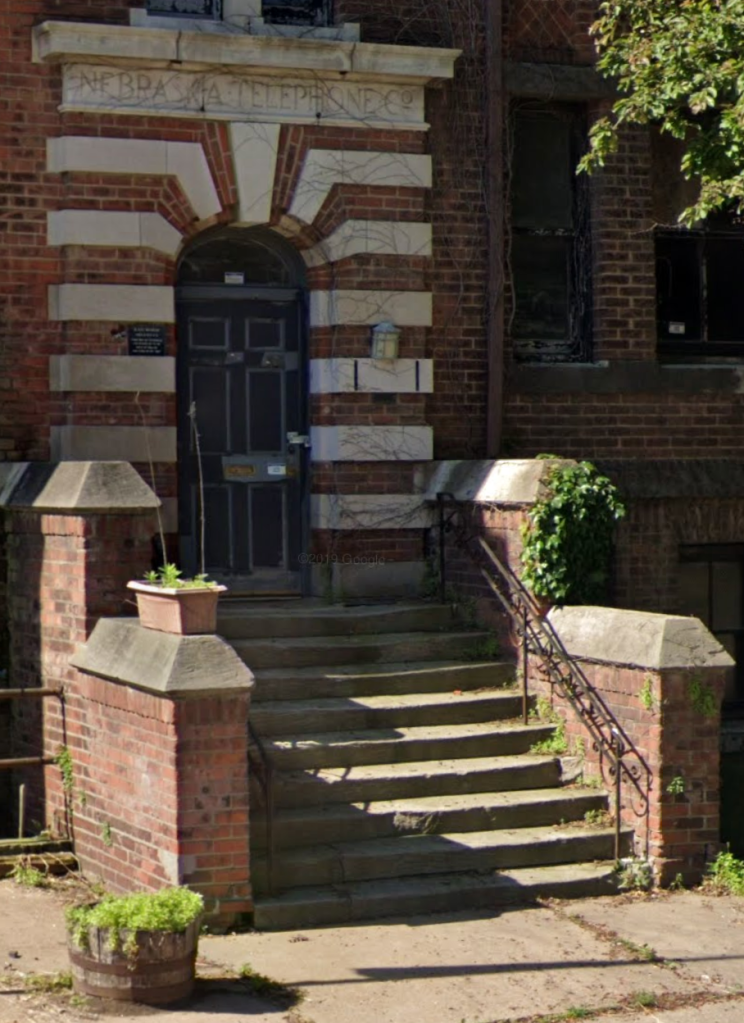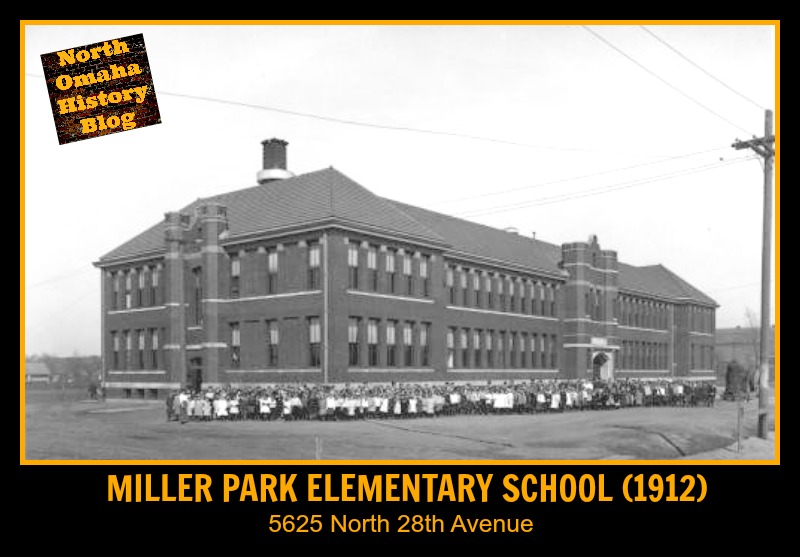Some buildings are constructed, serve a purpose and then are demolished. Others seem to live several lifetimes by acting as a base for several enterprises and a hub for the community during different crises. Despite looking like its falling apart right now, one Lake Street building is such an institution, serving as an icon of change, sustainability and transformation in the community. This is is a history of the Webster Telephone Exchange Building.
Why and How It Was Built

Located at 2213 Lake Street, the Webster Telephone Exchange Building was built in 1906 by the Nebraska Telephone Company. The company was started in 1884 to provide service across Nebraska extending into the Rocky Mountains, including north through Wyoming and south past Denver. They also provided service throughout Pottawatomie County in Iowa.
In 1906, Nebraska Telephone built the Webster Telephone Exchange Building. Designed by renowned Omaha architect Thomas R. Kimball (1862-1934), it was the largest of several exchanges they built in North Omaha, including the Kenwood Telephone Exchange Building. By 1886, the company owned all of the telephone exchanges in Nebraska. After designing dozens of buildings throughout Omaha by that time, Kimball was a renowned architect. He directed the overall architectural conception of the Trans-Mississippi and International Exposition in 1898, less than a decade earlier.
The Webster Telephone Exchange Building didn’t reflect any Neo-Classical Style influence the way the Expo had though; instead, it was dedicated to Commercial Vernacular style innovation, with a nod towards Tudor stylings as well as a classical Egyptian-influenced entryway to offset the simplicity of the rest of the building.
Easter Sunday Tornado

The Easter Sunday Tornado of 1913 obliterated the neighborhood around the building, killing more than 100 people in the immediate area. At the Webster Exchange though, operators stayed at their stations during the tornado and with shards of glass flying around them and reports of mass calamity, they keep service going.
Almost immediately after the tornado, the building was made into a make-shift mortuary for more than 100 dead people in the surrounding neighborhoods, including Long School, 24th and Lake, Kountze Place and 16th and Locust. The US Army also used the facility during their occupation of the area immediately after the 1919 lynching of Will Brown.
Becoming a Community Center

In late 1932, the Nebraska Telephone Company determined the Webster Exchange building was surplus and closed the facility.
In 1933, the company donated it to the Omaha chapter of the Urban League for use as a community center and offices. It was called the Near North Side Community Center or the Mid-City Community Center.
When the community center moved into the building they set up a nursery, library, gymnasium, and medical and dental clinics.
In 1934, the community center became the main offices for Omaha’s Urban League, which operated it for more than a dozen years afterwards.
After the US entered WWII in 1942, the building became the Wartime Community Center, hosting special events for the neighborhood to stay focused on the war and to support the families left behind as men left to join the military.

In 1948, the Urban League transferred ownership of the building and it became home to the Near North Side YMCA moved into the building, which stayed there until 1951 when their new building was finished.
That year, the building was converted into 16 apartments and operated as such for approximately a decade. By the mid-1960s though, the building was largely abandoned. For nearly a decade it stood empty and began deteriorating.
Becoming The Museum

Bertha Calloway and her husband bought it, did renovations to stabilize the building, and opened the Great Plains Black History Museum there in 1976. Through Calloway’s efforts, it was listed in the National Register of Historic Places in 1977 and designated as an official Omaha Landmark in 1980.
The museum moved out of the building in 2001 and relocated to the Jewel Building on North 24th Street.
An Endangered Building
After the museum moved out, a local company called White Lotus Development bought the Webster Telephone Exchange Building in 2014. Reportedly in terrible condition, there were whispers of renovation and restoration plans that haven’t come to fruition so far. Instead, there are visible signs of deterioration on the building’s exterior and low hopes for positive changes to come.
In 2016, the building joined more than 20 others in the area to be listed on the National Register of Historic Places called the 24th and Lake Historic District.
That hasn’t stopped decay though, and apparently the building has stood empty for more than a decade. Reports of a roof falling in and cracks in the exterior brickwork come in regularly from the community today. Ownership of the building and its stability are questionable at best.
The Webster Telephone Exchange Building is one of Omaha’s most endangered historic structures today, and there are no signs anyone is trying to save it.
You Might Like…
- A Biography of Bertha Calloway
- A History of the 24th and Lake Historic District
- A History of the Omaha Urban League
- A History of the Near North YMCA
- A History of North Omaha’s Red Dot Athletic Club
Elsewhere Online
- Webster Telephone Exchange Building on the City of Omaha Landmark Heritage Preservation Commission website
- Webster Telephone Exchange Building on Wikpedia
Bonus Pics!







Leave a comment